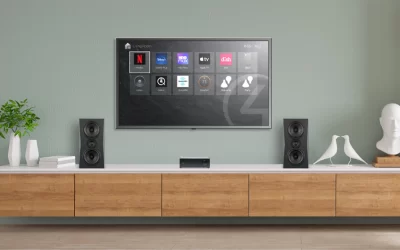Are you tired of listening to music and other audio content that feels flat and one-dimensional? Do you yearn for a more immersive and realistic listening experience? If so, then you might want to pay attention to the latest trend in audio technology: spatial audio. With the ability to create a 3D audio environment that mimics the way we hear sound in the real world, spatial audio is rapidly gaining popularity in the entertainment industry, from music to gaming and beyond. In this blog post, we’ll take a closer look at what S3 sound is, how it works, and why it’s quickly becoming the future of sound.
How 3D Sound Technology Works
Spatial audio creates a 3D audio environment by manipulating the direction and location of sounds. The technology uses a variety of techniques to achieve this effect, including binaural recording and ambisonics. Binaural recording uses a microphone setup that mimics the way our ears hear sound to capture audio in three dimensions. Ambisonics, on the other hand, records sounds from multiple directions and combines them into a single audio file that can be manipulated in post-production.
To create an immersive experience, spatial audio also requires head-tracking and real-time rendering. Head-tracking allows the audio to adjust as the listener moves their head. Real-time rendering ensures that the audio environment is responsive and dynamic.
Overall, the combination of these techniques allows it to create a truly 3D audio environment. This makes listeners feel like they are truly immersed in the sound.
Applications of 3D Sound
3D sound has numerous applications in the entertainment industry, from music production to gaming and virtual reality. In music production, spatial audio can create a more immersive and realistic listening experience for listeners. It can also be used in live performances to create a more dynamic and interactive experience for the audience.
In gaming and virtual reality, audio is essential for creating a truly immersive and realistic experience. By using spatial audio, game developers can create an audio environment that matches the visuals. Therefore allowing players to feel like they are truly inside the game world.

The THX app for Windows 10 is available for use with all types and brands of headphones and earbuds through their partner, Razer. Compatible with analogue 3.5mm headsets, USB and Bluetooth headphones, anyone can upgrade their 5.1, 7.1 or stereo audio experience.
Immersive sound has diverse applications across several fields. In education, spatial audio enables the creation of immersive learning environments, simplifying the process of learning and retaining information for students. For therapy, it helps to create serene environments that promote relaxation and reduce stress. In marketing, immersive sound empowers brands to create engaging and interactive advertisements that capture the attention of consumers. The potential of this new tech across industries is immense and can revolutionize the way we learn, heal, and engage with content.
Overall, spatial audio has the potential to revolutionize the way we experience sound. With numerous applications in a variety of industries, it is a technology to watch.
Apple’s Spatial Audio?
To take full advantage of spatial audio, you need to keep a few things in mind. Firstly, you must have the appropriate equipment. For instance, to experience Apple’s Spatial Audio, an iOS device running iOS 14 or newer and AirPods are essential. Since 2021, spatial audio extends for use with the new Apple TV 4K . Additionally, it can also be used with Macs powered by the company’s latest M1 chip. And as of 2023, the entire Homepods smart speaker range has spatial audio support. Futhermore, soon this will include Sonos’s new five-star Era 300 speaker.
Apple’s spatial audio is unique – at least where soundtracks are concerned, in that it doesn’t only provide virtualized surround and Atmos sound. It tracks your head movement using accelerometers and gyroscopes in AirPods to position the sound perfectly.

Moreover, it is crucial to ensure that the content you listen to supports 3D sound, as not all content does. It is also important to note that the quality of the spatial audio experience may vary depending on several factors, such as recording quality and listening environment. Nonetheless, if you have the right equipment and are listening to high-quality content, you can anticipate a genuinely immersive and engaging listening experience that fully exploits the latest audio technology. Therefore, don’t settle for less and make sure you have the appropriate equipment to experience spatial audio to its fullest.
Conclusion
In a nutshell, spatial audio is an ever-evolving technology that has the potential to revolutionize how we experience sound. Whether it’s creating immersive learning environments in education, serene atmospheres in therapy, or captivating ads in marketing, it has endless possibilities. With its ability to provide a more authentic and lifelike sound experience, it can transport us to unexplored places. As technology continues to advance, we can expect to see more innovative applications of spatial audio in different industries. It’s an exciting time for music enthusiasts and tech-savvy individuals alike, and the future of audio looks promising.
If you’re intrigued by the possibilities of spatial audio and are looking to incorporate it into your home or business, our team of experienced professionals is here to help. As experts in Control4 technology and complete automation and control solutions, we have the skills and knowledge to help you create a truly immersive audio experience. Whether you’re interested in adding 3D sound to your home cinema or creating a calming soundscape for your office or therapy room, we can work with you to design and implement a customized solution that meets your unique needs. Contact us today to learn more about how we can help you take your audio experience to the next level with the latest in spatial audio technology.



0 Comments